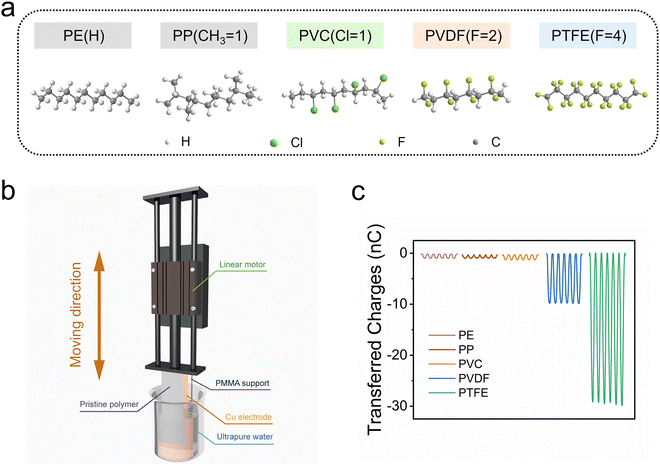 Open Access Article
Open Access ArticleCreative Commons Attribution 3.0 Unported Licence
Correction: A perspective on contact-electro-catalysis based on frontier molecular orbitals
Ziming
Wang
ab,
Xuanli
Dong
ab,
Fu-Jie
Lv
ab and
Wei
Tang
*ab
aCAS Center for Excellence in Nanoscience, Beijing Institute of Nanoenergy and Nanosystems, Chinese Academy of Sciences, Beijing, 100140, China. E-mail: tangwei@binn.cas.cn
bSchool of Nanoscience and Engineering, University of Chinese Academy of Sciences, Beijing, 100049, China
First published on 21st November 2024
Abstract
Correction for ‘A perspective on contact-electro-catalysis based on frontier molecular orbitals’ by Ziming Wang et al., Mater. Adv., 2024, 5, 6373–6377, https://doi.org/10.1039/D4MA00514G.
The authors regret that an incorrect version of Fig. 1 was included in the original article. The correct version of Fig. 1 is presented below, where the chemical structures of the polymers studied (PE, PP, PVC, PVDF and PTFE) are shown in panel a.
The Royal Society of Chemistry apologises for these errors and any consequent inconvenience to authors and readers.
| This journal is © The Royal Society of Chemistry 2024 |

